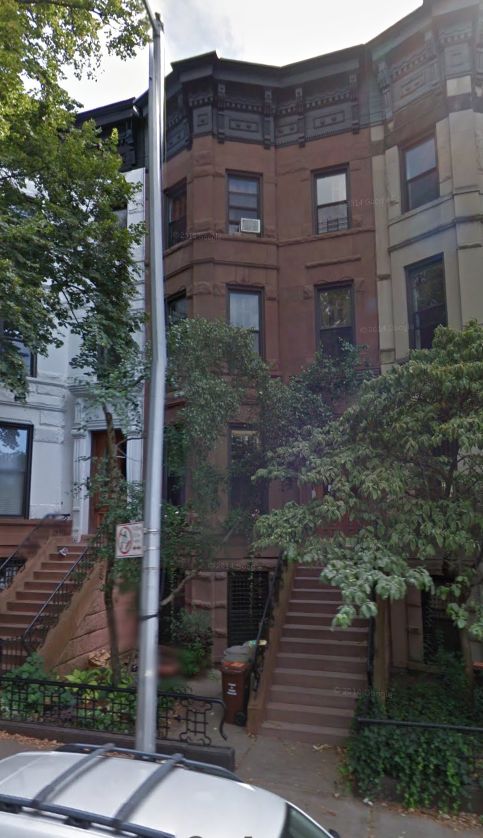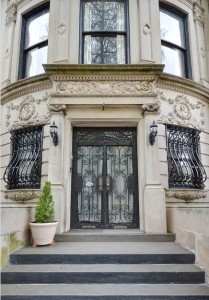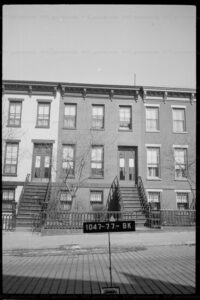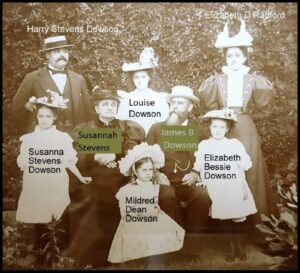Below is a small representation of the hundreds of investigations we’ve performed into our clients’ New York City properties. For each, we’ve produced a House History Book or House History Report. Contact us today to discover the history of YOUR house.
********************************************************************************************************************************
*
494 Second Street – an 1892 brownstone, located between 6th and 7th avenues, this structure was built upon the farmland of Nicholas Vechte, who constructed the “Old Stone House” at Washington Park. Owned afterwards by a Cowenhoven and a few Cortelyous, Edwin Litchfield, who built Prospect Park’s Litchfield Manor was one of the last to own the property before a Mrs. Jennie L. Ross submitted archtictural drawings to construct No. 494. After losing the property in a foreclosure suit, it was sold to a chemist by the name of Albert G. C. Hahn who worked as a consultant for George Eastman of the Eastman Kodak Co. Future owners included the veterinary surgeon for the Brooklyn & Queens Borough Fire Departments, a professor of music who ran the Conservatory of Music out of the house, the Ordnance Sergeant of the Thirteenth Regiment of the Sumner Armory. These owners were followed later by a public school teach who ran track at Madison High School with 2016 Democratic presidential candidate Bernie Sanders.
********************************************************************************************************************************

*
106 Eighth Avenue – Built upon the land of a wealthy and respected Brooklyn merchant of old Dutch stock, Theodorus Polhemus, when the area was still known as Prospect Park Slope, 106 Eighth Avenue was designed by architect Thomas Bennett. Builder Louis Bonert, constructing 106 Eighth Avenue – and its sister, No. 108 – as his personal family residences in 1900, he eventually sold them to the CEO of a chair manufacturing interest. Over the years, the house has passed through the hands of an attorney, the wealthy daughter of the “millionaire speedometer king,” an alderman, an investor, and others. Dubbed the Brooklyn Embassy, the 4-story limestone structure contains 6 bedrooms and 7 full bathrooms. In the late 1940s the house, according to city records, was divided up into eight luxury apartments, but after a full renovation in the 1970s, it is currently on the chopping block, and is expected to be returned by its next owner into a single family home once again.
********************************************************************************************************************************
 No. 139 16th Street
No. 139 16th Street – (Part of a story, written by our client, which appeared in
The Wall Street Journal) After a brief meeting around our kitchen table, Mr. Hartig set off, following the chain of title through the archives of the Department of Buildings, searching for the footprint on 19th-century Sanborn fire-insurance maps and noting mentions of the address in old editions of the Brooklyn Daily Eagle. Every few weeks, a colorful tidbit arrived via email: “Here’s a fire record on your address in the Brooklyn Standard Union dated 1920.” (Indeed, our home inspector had pointed out a few charred timbers in the crawl space under our roof.) “Your property was conveyed a whopping 14 times in the 1870s—I believe I’m on to the cold trail of some fiscal high jinks, or what most people, then and now, would refer to as fraud.” In the end, the portrait that emerged of our home read as a micro-history of Brooklyn, starting in the mid-1600s, when the land on which the house was eventually built was deeded to the Schaers, a Dutch farming family. For nearly two centuries, the plot was part of an active farm used to grow produce shipped over the East River to feed the burgeoning population of Manhattan. In August of 1776, the first shots of a pivotal Revolutionary War campaign, the Battle of Brooklyn, were fired nearby, aimed at two British soldiers raiding a local watermelon patch. In the 1860s, just before the actual house was constructed, the property took a

darker turn, coming into possession of Pierre L. Pearce, a ship’s chandler who had plied a villainous side line in the illegal capture, transport, and selling of enslaved people. But some of the most moving discoveries were among the most quotidian: a portrait showing James Dowson, a grain elevator superintendent who lived (and died) in the building around the turn of the 20th century, surrounded by his family, with his skunk-striped beard, gleaming watch fob, boater hat and a pinafored young girl clutching his knee. The faded classified ad from 1925, listing the “modern 5-room apartment” (where in 2012, I went into labor with my son) available for $50 a month. Like most houses of its age—it turned 140 in 2018—nearly every room, I now know, was used in various eras as a delivery room or a deathbed, a wedding chapel or a funeral parlor. “After you do this work, it’s impossible not to look at the walls you pass every day differently,” said Mr. Hartig, “and to wonder what mark you’ll leave on them, too.”
********************************************************************************************************************************
 * 494 Second Street – an 1892 brownstone, located between 6th and 7th avenues, this structure was built upon the farmland of Nicholas Vechte, who constructed the “Old Stone House” at Washington Park. Owned afterwards by a Cowenhoven and a few Cortelyous, Edwin Litchfield, who built Prospect Park’s Litchfield Manor was one of the last to own the property before a Mrs. Jennie L. Ross submitted archtictural drawings to construct No. 494. After losing the property in a foreclosure suit, it was sold to a chemist by the name of Albert G. C. Hahn who worked as a consultant for George Eastman of the Eastman Kodak Co. Future owners included the veterinary surgeon for the Brooklyn & Queens Borough Fire Departments, a professor of music who ran the Conservatory of Music out of the house, the Ordnance Sergeant of the Thirteenth Regiment of the Sumner Armory. These owners were followed later by a public school teach who ran track at Madison High School with 2016 Democratic presidential candidate Bernie Sanders.
* 494 Second Street – an 1892 brownstone, located between 6th and 7th avenues, this structure was built upon the farmland of Nicholas Vechte, who constructed the “Old Stone House” at Washington Park. Owned afterwards by a Cowenhoven and a few Cortelyous, Edwin Litchfield, who built Prospect Park’s Litchfield Manor was one of the last to own the property before a Mrs. Jennie L. Ross submitted archtictural drawings to construct No. 494. After losing the property in a foreclosure suit, it was sold to a chemist by the name of Albert G. C. Hahn who worked as a consultant for George Eastman of the Eastman Kodak Co. Future owners included the veterinary surgeon for the Brooklyn & Queens Borough Fire Departments, a professor of music who ran the Conservatory of Music out of the house, the Ordnance Sergeant of the Thirteenth Regiment of the Sumner Armory. These owners were followed later by a public school teach who ran track at Madison High School with 2016 Democratic presidential candidate Bernie Sanders.
 * 106 Eighth Avenue – Built upon the land of a wealthy and respected Brooklyn merchant of old Dutch stock, Theodorus Polhemus, when the area was still known as Prospect Park Slope, 106 Eighth Avenue was designed by architect Thomas Bennett. Builder Louis Bonert, constructing 106 Eighth Avenue – and its sister, No. 108 – as his personal family residences in 1900, he eventually sold them to the CEO of a chair manufacturing interest. Over the years, the house has passed through the hands of an attorney, the wealthy daughter of the “millionaire speedometer king,” an alderman, an investor, and others. Dubbed the Brooklyn Embassy, the 4-story limestone structure contains 6 bedrooms and 7 full bathrooms. In the late 1940s the house, according to city records, was divided up into eight luxury apartments, but after a full renovation in the 1970s, it is currently on the chopping block, and is expected to be returned by its next owner into a single family home once again.
* 106 Eighth Avenue – Built upon the land of a wealthy and respected Brooklyn merchant of old Dutch stock, Theodorus Polhemus, when the area was still known as Prospect Park Slope, 106 Eighth Avenue was designed by architect Thomas Bennett. Builder Louis Bonert, constructing 106 Eighth Avenue – and its sister, No. 108 – as his personal family residences in 1900, he eventually sold them to the CEO of a chair manufacturing interest. Over the years, the house has passed through the hands of an attorney, the wealthy daughter of the “millionaire speedometer king,” an alderman, an investor, and others. Dubbed the Brooklyn Embassy, the 4-story limestone structure contains 6 bedrooms and 7 full bathrooms. In the late 1940s the house, according to city records, was divided up into eight luxury apartments, but after a full renovation in the 1970s, it is currently on the chopping block, and is expected to be returned by its next owner into a single family home once again.
 No. 139 16th Street – (Part of a story, written by our client, which appeared in The Wall Street Journal) After a brief meeting around our kitchen table, Mr. Hartig set off, following the chain of title through the archives of the Department of Buildings, searching for the footprint on 19th-century Sanborn fire-insurance maps and noting mentions of the address in old editions of the Brooklyn Daily Eagle. Every few weeks, a colorful tidbit arrived via email: “Here’s a fire record on your address in the Brooklyn Standard Union dated 1920.” (Indeed, our home inspector had pointed out a few charred timbers in the crawl space under our roof.) “Your property was conveyed a whopping 14 times in the 1870s—I believe I’m on to the cold trail of some fiscal high jinks, or what most people, then and now, would refer to as fraud.” In the end, the portrait that emerged of our home read as a micro-history of Brooklyn, starting in the mid-1600s, when the land on which the house was eventually built was deeded to the Schaers, a Dutch farming family. For nearly two centuries, the plot was part of an active farm used to grow produce shipped over the East River to feed the burgeoning population of Manhattan. In August of 1776, the first shots of a pivotal Revolutionary War campaign, the Battle of Brooklyn, were fired nearby, aimed at two British soldiers raiding a local watermelon patch. In the 1860s, just before the actual house was constructed, the property took a
No. 139 16th Street – (Part of a story, written by our client, which appeared in The Wall Street Journal) After a brief meeting around our kitchen table, Mr. Hartig set off, following the chain of title through the archives of the Department of Buildings, searching for the footprint on 19th-century Sanborn fire-insurance maps and noting mentions of the address in old editions of the Brooklyn Daily Eagle. Every few weeks, a colorful tidbit arrived via email: “Here’s a fire record on your address in the Brooklyn Standard Union dated 1920.” (Indeed, our home inspector had pointed out a few charred timbers in the crawl space under our roof.) “Your property was conveyed a whopping 14 times in the 1870s—I believe I’m on to the cold trail of some fiscal high jinks, or what most people, then and now, would refer to as fraud.” In the end, the portrait that emerged of our home read as a micro-history of Brooklyn, starting in the mid-1600s, when the land on which the house was eventually built was deeded to the Schaers, a Dutch farming family. For nearly two centuries, the plot was part of an active farm used to grow produce shipped over the East River to feed the burgeoning population of Manhattan. In August of 1776, the first shots of a pivotal Revolutionary War campaign, the Battle of Brooklyn, were fired nearby, aimed at two British soldiers raiding a local watermelon patch. In the 1860s, just before the actual house was constructed, the property took a  darker turn, coming into possession of Pierre L. Pearce, a ship’s chandler who had plied a villainous side line in the illegal capture, transport, and selling of enslaved people. But some of the most moving discoveries were among the most quotidian: a portrait showing James Dowson, a grain elevator superintendent who lived (and died) in the building around the turn of the 20th century, surrounded by his family, with his skunk-striped beard, gleaming watch fob, boater hat and a pinafored young girl clutching his knee. The faded classified ad from 1925, listing the “modern 5-room apartment” (where in 2012, I went into labor with my son) available for $50 a month. Like most houses of its age—it turned 140 in 2018—nearly every room, I now know, was used in various eras as a delivery room or a deathbed, a wedding chapel or a funeral parlor. “After you do this work, it’s impossible not to look at the walls you pass every day differently,” said Mr. Hartig, “and to wonder what mark you’ll leave on them, too.”
darker turn, coming into possession of Pierre L. Pearce, a ship’s chandler who had plied a villainous side line in the illegal capture, transport, and selling of enslaved people. But some of the most moving discoveries were among the most quotidian: a portrait showing James Dowson, a grain elevator superintendent who lived (and died) in the building around the turn of the 20th century, surrounded by his family, with his skunk-striped beard, gleaming watch fob, boater hat and a pinafored young girl clutching his knee. The faded classified ad from 1925, listing the “modern 5-room apartment” (where in 2012, I went into labor with my son) available for $50 a month. Like most houses of its age—it turned 140 in 2018—nearly every room, I now know, was used in various eras as a delivery room or a deathbed, a wedding chapel or a funeral parlor. “After you do this work, it’s impossible not to look at the walls you pass every day differently,” said Mr. Hartig, “and to wonder what mark you’ll leave on them, too.”